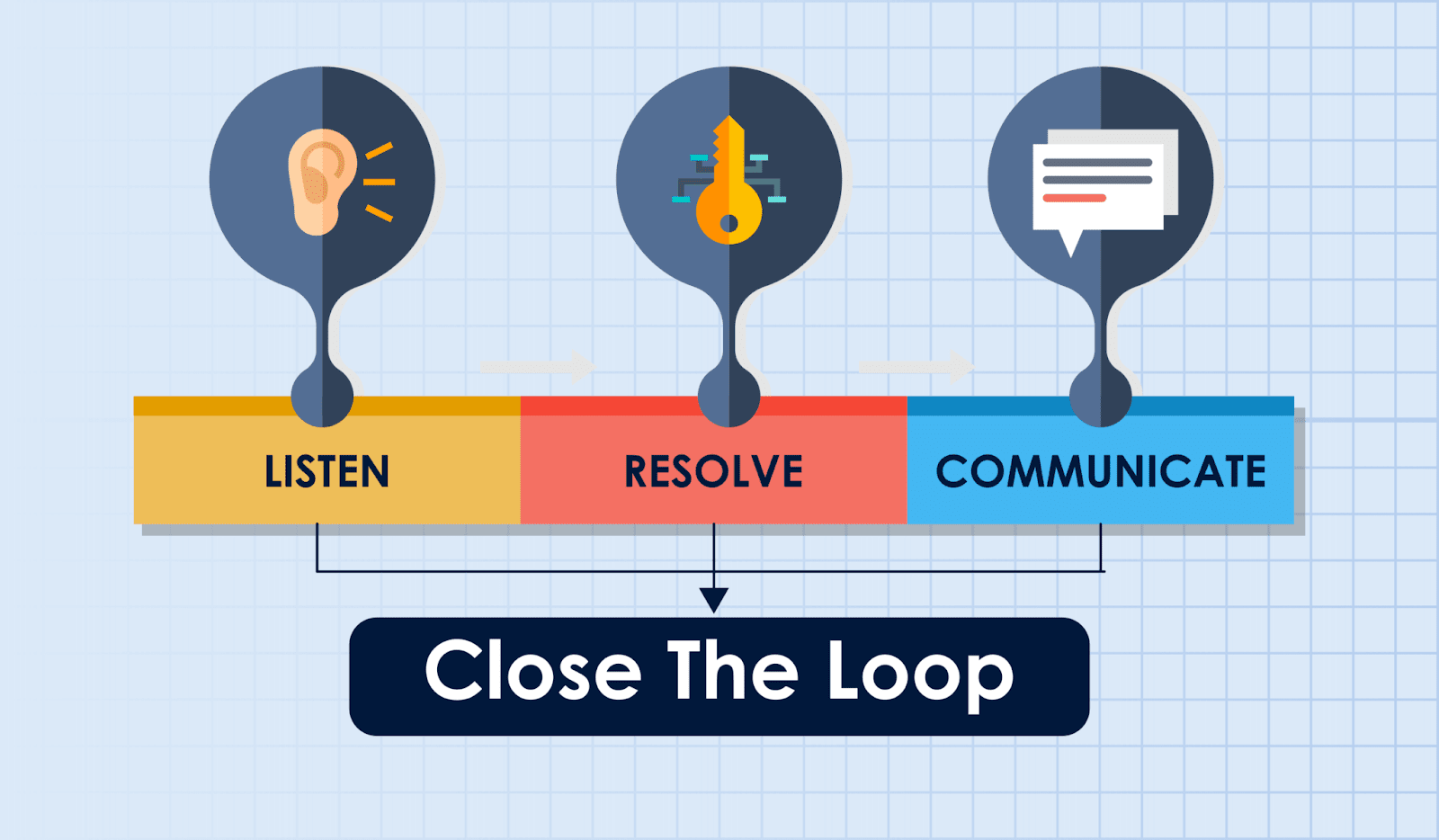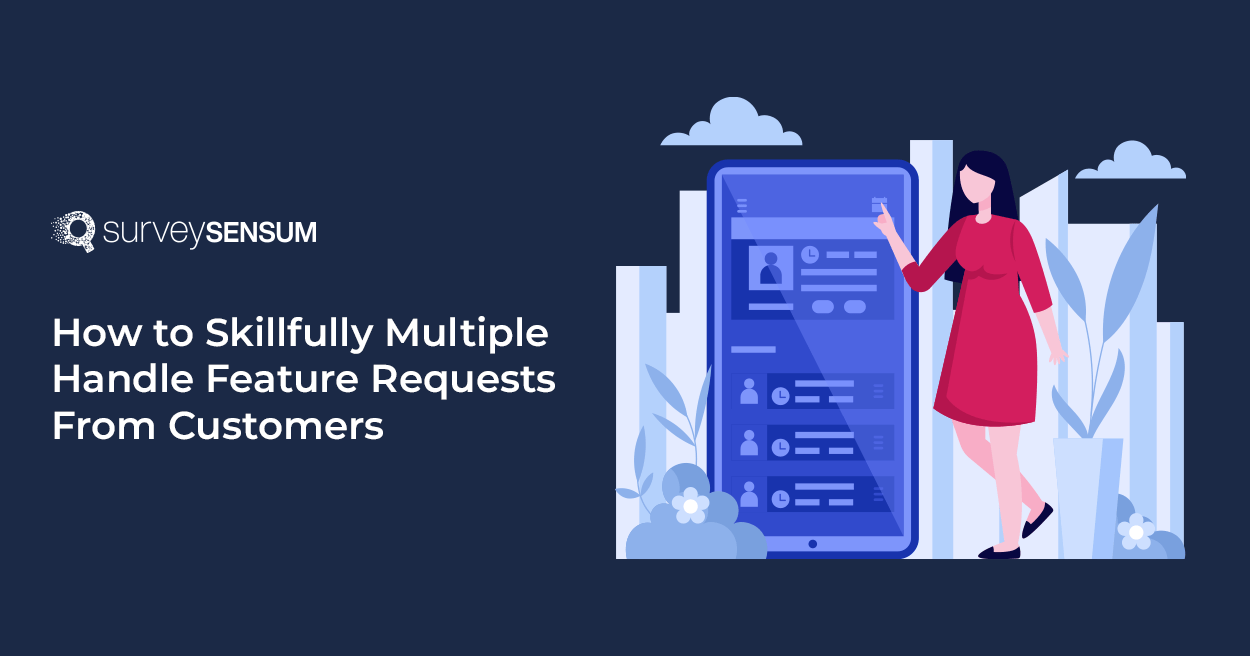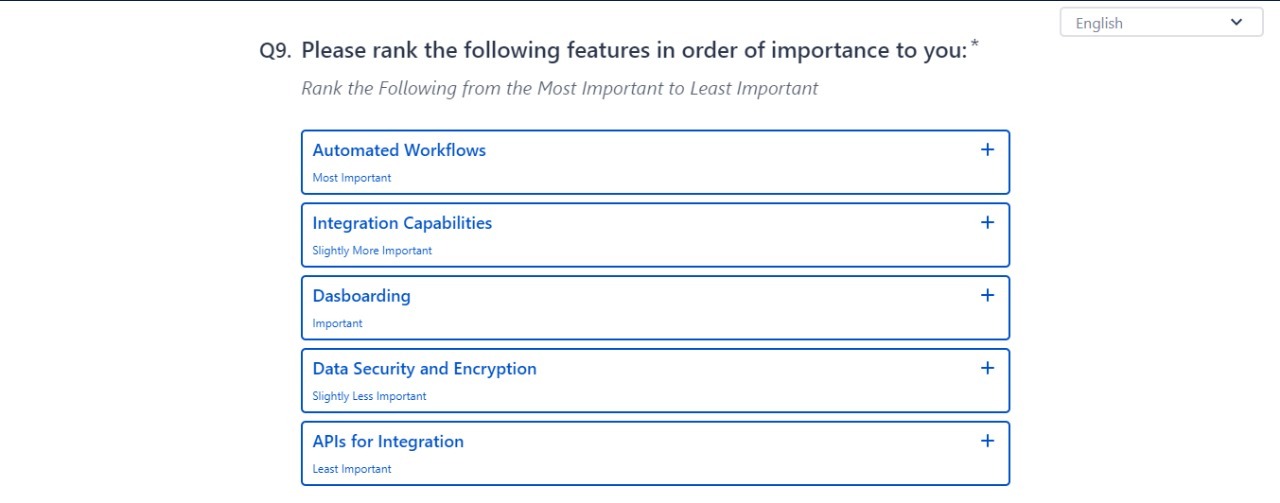

One of our long-time SaaS clients, Alice, launched her business a few years ago, and her project management tool skyrocketed as it solved a few drawbacks of existing tools in the market. Along with success, Alice also saw a plethora of feature requests from her customers, including her high CLV customers.
Initially, Alice was excited about these feature requests from the product feedback surveys. But she knew that blindly implementing every feature request could lead to confusion rather than innovation. She felt the need to implement some sort of strategy, along with a robust customer feedback tool, that would allow her users to express their needs, discuss pain points, and collectively prioritize features.
→ But, why is it crucial to manage and prioritize feature requests efficiently?
Because the challenge is to prioritize which one – how to identify the one that has the biggest impact or aligns with the business goal.
So, what strategies did Alice adopt to streamline this process? Let’s scroll down and discover!
What is a Feature Request?
A feature request is a suggestion made by a user to add a new feature or enhance an existing feature in a product, application, or service. Users typically submit their feature requests to express their needs, address pain points, or propose improvements that they believe would enhance their experience with the product.
Managing and prioritizing feature requests will help you
- Improve customer satisfaction
- Improve user engagement and retention
- Gain a competitive edge in the marketplace
- Create a user-centric product for your customers
- Enhance product quality
Now, let’s talk about those impactful strategies that Alice used to manage and prioritize her feature requests.
How to Manage Multiple Feature Requests?
Here are the 7 strategies you can employ to streamline your feature requests process.
1. Put Everything in One Place
Efficiently managing multiple feature requests begins with collecting all requests into a centralized system. Whether they come from customer support tickets, emails, community forums, etc, gather and organize them in one dedicated space. This streamlines the process and ensures that no valuable requests are overlooked.
So,
- Utilize a project management tool to capture feature requests from all channels. Where you can visualize, manage, and update the requests.
- Regularly review and update the criteria to adapt to changing business needs.
- Foster a collaborative environment where different teams contribute to the decision-making process.
2. Talk to Your Product Team and Prioritize the Feature
Once feature requests are centralized, the next crucial step is to start by asking these important questions to your product team to understand their insight
- Do we have the resources to build out this feature?
- Why exactly haven’t we built out this feature until now? Are there any obstacles we need to prepare for before taking any steps?
- Is this our most pressing need right now?
- Are there other requested features we can develop that’ll offer the most benefit overall?
- How relevant is this to our end users? Is it just a wish, or a critical, need-to-have, deal-breaker feature?
When you have the answers to these questions, here are the tips to prioritize your feature requests.
Here’s how:
- Impact on user experience: Prioritize features that enhance usability, streamline workflows, and contribute positively to the overall product experience.
For example, prioritizing a streamlined onboarding process to enhance the first-time user experience.
- Alignment with product vision and goals: Evaluate each feature request in terms of its alignment with the product’s long-term vision and strategic goals. Features that contribute directly to the product roadmap and support overarching business objectives should be given higher priority.
For example: Giving priority to features that align with the company’s vision of becoming a leader in sustainable, eco-friendly products.
- Targeting specific business goals: Customize your prioritization based on specific business goals. For example:
- Churn Reduction: Prioritize features requested by customers who have churned. Addressing their needs might prevent future customer churn.
- Winning Deals: Focus on features requested by potential customers who did not convert. Addressing these needs could increase the chances of winning similar deals in the future.
- Customer Expansion: Prioritize requests from customers with open deals. Meeting their requirements can contribute to upselling opportunities and expanding customer accounts.
- Frequency of request: Take note of how often a particular feature is requested. Features that are consistently in high demand are likely to have a broader user impact. Prioritizing based on request frequency can help address the most pressing needs of the user base.
For example: Prioritizing a feature that has been consistently requested by a large segment of the user base.
- Technical feasibility: Assess the technical feasibility of implementing each feature. Consider the existing infrastructure, development time, and potential challenges. Prioritize features that can be implemented efficiently without compromising the stability of the product.
For example: Choosing to implement a feature that aligns with user needs and is feasible to develop within the current system architecture.
- Strategic business value: Analyze the strategic business value of each feature. Some features may have a significant impact on revenue, market positioning, or competitive advantage. Prioritize features that align with the overall business strategy and provide substantial value.
For example: Prioritize a feature that not only meets user demands but also has the potential to significantly increase product revenue and market competitiveness.
Also,
- Schedule regular meetings involving representatives from different teams like customer support, product management, and development teams to discuss and understand the insights of each team.
- Clarify the roles and responsibilities of each team in the feature prioritization process.
At the end of this session, you now have a list of features that you can create.
Idea: Simply ask your customers!
Launch ‘Feature Prioritization Survey’, with SurveySensum’s survey builder, to understand and manage the feature prioritization of your users. But be sure to only ask about the features that resonate with your roadmap.
Sign Up & Launch Feature Prioritization Surveys With SurveySensum!
In a recent Twitter discussion of #CXQOTD’ many, CX thought leaders shared their insights on the same.
Jeremy Watkin, director at Director of Custserv and NumberBarn: We currently have our team and anytime they handle a ticket where a customer asks for a specific feature that we don’t offer, we have them tag that ticket and they go through those periodically to see what customers are asking for.
Certainly, I do like to keep a tally of how often customers ask for specific things and surface that to our product team and our company ownership but I think other things you have to figure out are how to weigh them in a way that makes sense, whether it’s going to generate more revenue or maybe it is generating a lot of ticket volume or a lot of customer discontent and if you know your cost per contact sometimes, that can increase the importance of a specific feature.
Or maybe it’s a bug that just needs to be fixed more urgently. I think that beyond the customer support and customer experience team, it will require some partnership across the whole organization to think strategically about what makes sense for the company and where we are gonna devote our efforts and our priorities in a way that makes the most sense for our company’s mission and vision.
3. Talk to the Sales and Marketing Team
Your sales and marketing team are always on the front lines, directly interacting with current and potential users. Collaborating with them ensures a holistic understanding of user needs, which enables better decision-making.
So,
- Ask your customer-facing teams specific questions and share insight about features you’re considering or conducting discovery on so they can collect more information during their conversations with users.
- Share the “why” behind your decision. Help provide context to internal teams on why an idea is or is not a priority. This will help them understand the strategic importance of the features and how they align with the overall product vision.
- When preparing to release something new, ask internal teams if they have any ideal beta customers so you can further test.
- Inform sales and marketing when a feature is planned for launch enabling them to align their communication strategies, create targeted campaigns, and be prepared to address customer inquiries effectively.
Luís Melo, Senior Manager at Zendesk: Customer-facing teams (sales, support, success) should just gather feature requests, and present them to the product team, with an indication of how many times they were requested. Then the product team should do the analysis. Prioritise, based on strategy, roadmap, etc.
4. Keep the Communication with the Customer Open
Maintaining transparent and open communication with customers is essential for building trust and keeping them engaged with your product.
So,
- Keep your customer informed about the feature request process. Open communication fosters trust, showing that you value your users and are committed to continuous improvement.
- Set realistic expectations for feature implementation as it helps manage customer expectations and prevent disappointment if a feature request takes longer than anticipated.
- Share regular updates on the requested features to keep users engaged and satisfied. This will reinforce the notion among users that their feedback is valued.
- Create a public roadmap to provide visibility into the feature request process and the overall product development journey.
5. Learn to say NO

In the process of managing feature requests, it is important to handle rejection by saying no, as some feature requests may not align with your product’s goals, roadmap, technical feasibility, etc. Effectively handling rejections involves transparent communication, offering alternative solutions or workarounds, and keeping the door open for future considerations.
So,
- Clearly communicate the reasons for rejecting a feature request, as it shows respect for users and fosters transparency.
- Offer workarounds or alternative features as they help users derive value from your product despite the rejection.
- Keep the door open for future consideration as it ensures that your users feel heard and continue to contribute valuable feedback.
Jeremy Watkin, director at Director of Custserv and NumberBarn: Well, I guess I am honest all the time but it’s very rare that I actually say no to a feature request. Anytime my customer asks for something that we can do, we tag that as a feature request on our ticketing system and I enjoy reading through those and seeing what we’re at and what customers are asking for. And to be honest, in our contact center environment, in our company, we do our best to find a solution for a customer even if we can’t do exactly what they’re asking for. I would say the no comes when somebody is looking for something that requires a huge amount of development and has no alternative but that doesn’t come up super often. More often they ask for something we can’t do, we keep track of it. The ones customers asked for the most, we were able to implement faster. I mean like on my list I have 250+ feature requests so they come up a lot. And it is just a matter of you know which ones get the priority. But this question also depends on the type of client you’re working with.
Dr. Debra Bentson, SHRM-SCP, CWPP, CPIOP, BBA, MBA, DBA: I thank them, identify the problem they are trying to solve, explain if/why we’re not able to do it, and offer options that we can do. Often times customers will ask for solutions that are not supported when there are viable options to solve their issue available.
Tanuj Diwan, Co-Founder at SurveySensum: 1. If the request doesn’t support the product vision 2. If not asked by 3-4 of our ideal customer profile or highest paying customers 3. It would take too much time to build and will be used by less than 1% of users 4. If we have no chance of asking for a premium on those requests.
6. Implementing a Feedback Loop

Implementing a closed feedback loop in your product development process is a crucial step to ensure that you are creating features that truly meet the needs and expectations of your users. This involves actively seeking input from your user base at various stages, from the initial idea phase to iterative development.
So,
- Involve user feedback on proposed features before development. This ensures that the design process is driven by their needs and preferences and also prevents assumptions about what your users want.
- Ensure an iterative development process based on customer feedback. This enables your team to adapt to changing user needs and market dynamics as the product evolves.
Close the Feedback Loop With SurveySensum!
7. Monitoring and Iterating
This phase involves continuous monitoring and analyzing the impact of implemented features, making strategic adjustments based on user feedback, and ongoing refinement of the feature request process.
So,
- Continuously monitor and measure the impact of the implemented features. Whether or not the implemented features are boosting your user satisfaction.
- Adapt an iterative approach to the feature implementation process as this will help you to adjust and adapt strategies based on real-time feedback and ensure that your product remains relevant.
- Continuously improve your feature requests process to ensure that your process becomes more efficient over time.
Implement these 7 strategies to ensure that your feature requests are streamlined and you prioritize the important ones by including them in your product roadmap.
Conclusion
No matter how great your product is, feature requests will always keep pouring in. This necessarily doesn’t mean that your product lacks something. This is because different users have different needs and preferences and the more they explore your product the more they will want it to meet all their expectations. That’s good news!
However, it is easy to get lost in the plethora of feature requests and get overwhelmed while prioritizing them. This is where the 7 strategies discussed in this blog come in handy. By implementing and adapting your feature request process to these strategies you can streamline all the feature requests from your customers effectively.
But instead of trying to figure out which feature to take on priority, launch feature prioritization surveys with advanced customer feedback tools like SurveySensum. These surveys will help you figure out which features your customers find more important and this way you prioritize your efforts to implement those features. Not only that, this tool comes with the industry’s best CX experts who will provide you with end-to-end support and guidance to make sure the CX program is a success!
















